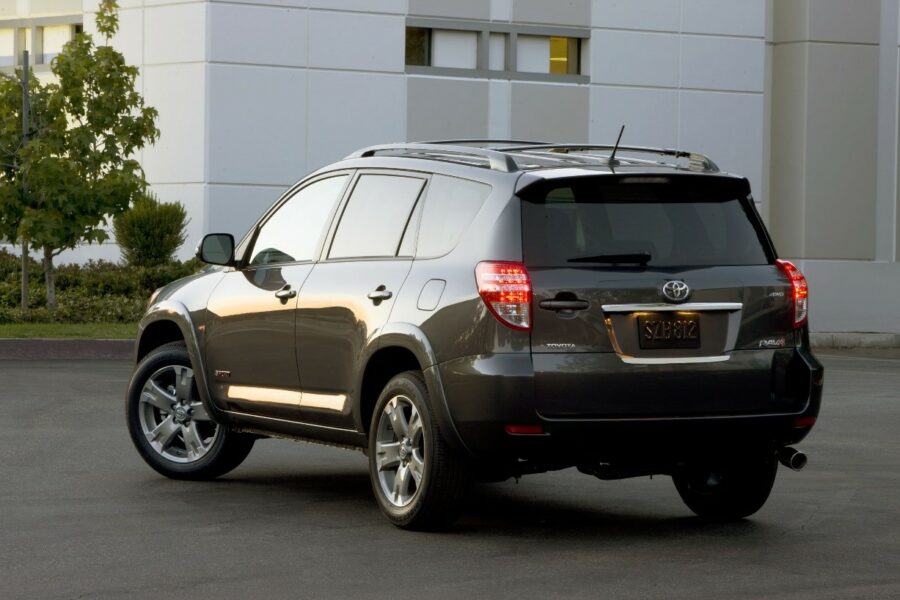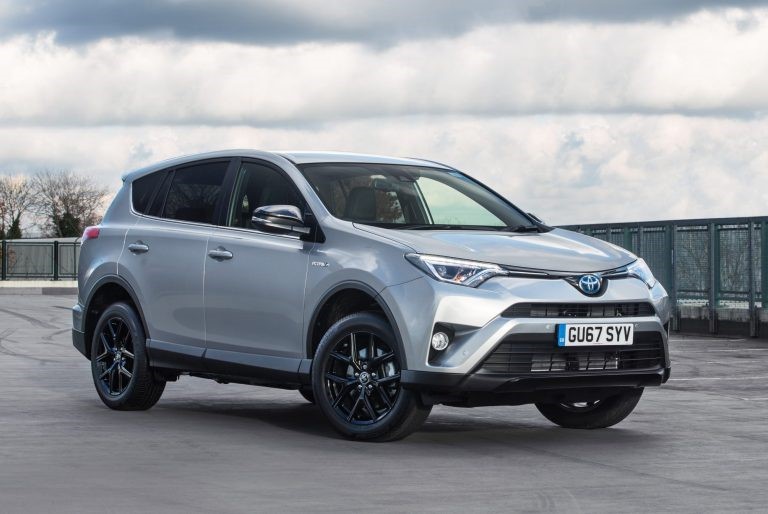Toyota has had many successful and unique models over the years. One of such unique products was the Toyota RAV4. This was a historic product for Toyota as it was the first compact vehicle to be equipped with 4-wheel drive. In fact, its very name was defined its capability. RAV4 simply meant Recreational Active Vehicle with a 4-wheel drive. Let’s take a look at its history and the journey it has been through.
Inception
The Toyota RAV4 was first introduced in its concept form at the 1989 Tokyo Motor Show. In its concept form it was called as the RAV-FOUR. What made it stand out was the overall footprint in terms of size. It was a compact vehicle with decent height and ground clearance but did not have the bulk of the regular SUVs that usually came with the 4-wheel drive option.
The car had a rugged design, tall stance and even had a winch to flaunt its off-road capabilities.

However, Toyota kept working on the design and showcased it again at the 1993 show. That’s when Toyota came up with the name RAV4 which has stuck on till date. This concept also showcased a removable roof. The car would still be under development until it was launched in 1994.
First Generation (1994-2000)
The first-gen RAV4 (XA10) was launched in May 1995 in Japan and subsequently in the UK as well. This was a three-door four-seater with very limited boot space. It featured a 2.0-litre 16V engine with four-wheel drive. It came mated to either a 4-speed automatic or a 5-speed manual transmission

While the RAV4 was popular, it lacked space given its compact nature. Toyota launched a five-door version in 1995 targeting customers looking for more space and practicality. This car was longer than the original and featured decent space for the rear passengers.
In 1997, Toyota introduced an all-electric RAV4. The RAV4 EV could do about 100-120 miles on a full charge. Its nickel metal hydride batteries would take 5-6 hours to be fully charged.
In 1998, Toyota gave the RAV4 a facelift. The new RAV4 had a redesigned front and included minor feature upgrades. There was also a new three-door soft top version for people who fancied a convertible.

Second Generation (2001 – 2005)
By 2001, the market caught up to introducing SUVs in a compact form. To keep ahead in the competition, Toyota gave the RAV4 a generation facelift. The second-gen RAV4 (XA20) too came with three and five door configurations. It got the new 2.0-litre AZ-series engine that Toyota has developed. Later the RAV4 would go on to get a fuel-efficient 2.0-litre D-4D turbo petrol motor.
In 2004, the RAV4 got a minor facelift and a new engine in the form of a more powerful 2.4-litre AZ-series engine

Third Generation (2005 – 2012)
The third generation of the RAV4 (XA30) made its debut in 2005. This variant gave the double wishbone independent rear suspension with diagonally positioned dampers a sturdy foundation. Along with the suspension, the overall NVH levels were improved which made the car more comfortable for passengers.
The third-gen also got a 10mm increased ground clearance, and now stood 210 mm above the ground. As a first, the XA30 was the first Toyota four-wheel drive to get an electronic steering. With a few little adjustments and improvements, this model was offered for sale for seven years. 2011 saw external alterations made to the Toyota RAV4.
Together, Tesla Motors and Toyota Motor Corporation introduced the second-generation Toyota RAV4 EV vehicle in September 2012. Lithium-ion batteries, which could go up to 113 miles in extended charge mode, powered the vehicle’s motor.

Fourth Generation (2013 – 2018)
With the fourth-gen, the RAV4 (XA40) grew longer making its debut at the LA Auto show in 2012. It got new engine and transmission options. Along with 2.0-litre engine, Toyota also introduced a 2.5-lite in line four. Customers could choose either a six-speed automatic, a six-speed manual or a CVT transmission.

The year 2016 saw the arrival of a fully-hybrid RAV4. This car had better fuel efficiency even with a higher 197 hp powered motor.
Fifth Generation (2019 – Present)
The fifth and the current generation of the RAV4 was introduced in 2019 as a all-hybrid SUV. It was built on Toyota’s New Global Architecture platform. This platform helped the RAV4 get better handling and safety.
The hybrid technology from the fourth generation RAV4 vehicle was carried over to the fifth generation Toyota RAV4, which added an electric motor to the 2.5-litre engine. This change decreased carbon emissions while also improving power, efficiency, responsiveness, and fuel economy.

Future?
It has been almost five years since the RAV4 has been in its fifth generation. The next-gen RAV4 is already in development and the year 2025 could see the introduction of the same.
The RAV4 has been a very successful product for Toyota across the globe. Toyota has continuously worked on the development of the product over the years. It’s practicality, space, power, four-wheel drive capability, Toyota’s reliability and the value for money proposition make it a popular choice for car buyers.
Looking at Toyota’s portfolio here in India, the RAV4 could be a really good option in the premium SUV segment. It could easily take on the Tata Harrier, MG Hector and the 5-seat version of the Mahindra XUV 700. Given the Toyota brand image and the quality and service, Indian consumers would appreciate this world class SUV. The fact that there is more focus on Hybrids could also boost sales. In my opinion, Toyota should seriously think about getting the RAV4 to India.
